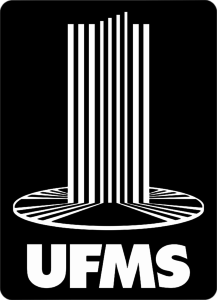Use este identificador para citar ou linkar para este item:
https://repositorio.ufms.br/handle/123456789/12225| Tipo: | Tese |
| Título: | LÉXICO E RELIGIOSIDADE POPULAR E SUAS INTERFACES COM A CULTURA: DENOMINAÇÕES PARA “DIABO” E “FANTASMA” NO INTERIOR DE SÃO PAULO - DADOS DO PROJETO ALiB |
| Autor(es): | Adriana Pereira Santana |
| Primeiro orientador: | Aparecida Negri Isquerdo |
| Resumo: | O nível lexical de uma língua demonstra visões de cunho social, histórico e, sobretudo, cultural de uma sociedade, revelando formas como cada comunidade percebe o mundo. Assim, é por meio da inter-relação léxico, cultura e sociedade que os falantes elaboram e concretizam o conhecimento. Nesse sentido, esta Tese tem por objetivo mais amplo analisar um recorte do vocabulário utilizado pelos falantes paulistas no que tange a temas relacionados à área semântica Religião e Crenças, do Questionário Semântico-Lexical (QSL) do Projeto Atlas Linguístico do Brasil (ALiB), questão 147 – “Deus está no céu e no inferno está o_______” e questão 148 - “O que algumas pessoas dizem já ter visto, à noite, em cemitérios ou em casas, que se diz que é do outro mundo? ________” (Comitê Nacional..., 2001, p. 33), com ênfase na dimensão cultural do léxico. Para tanto, foram delimitados os seguintes objetivos específicos: identificar e sistematizar as denominações fornecidas pelos informantes do Projeto ALiB para nomear as entidades “diabo” e “fantasma”; analisar a distribuição diatópica das denominações apuradas, por meio de cartas linguísticas; discutir a proposta de um possível “falar paulista” na área investigada, além de investigar inter-relações entre o acervo lexical que compôs o corpus da pesquisa e vestígios de uma cultura transmitida de geração para geração. Para tanto, adotaram-se contribuições da Lexicologia (Biderman, 1998; 2001a; 2002); da Dialetologia e Geolinguística (Amaral, 1976; Cardoso, 2010; Cardoso et al, 2014a; Cardoso et al, 2014b) e da Antropologia Linguística (Duranti, 2000). O percurso metodológico foi traçado a partir dos dados registrados por meio de inquéritos linguísticos realizados nas 37 localidades do interior do estado de São Paulo, que compõem a rede de pontos do Projeto ALiB. Para a questão 147/QSL, foram apurados 337 registros lexicais que, após analisados, validados e agrupados, resultaram em 14 denominações para o conceito em questão: diabo, capeta, satanás, demônio, lúcifer, coisa ruim, cão, chifrudo, inimigo, tentação, cramulhano, sujo, bicho e tinhoso. Já a questão 148/QSL gerou 225 registros lexicais com 17 denominações validadas: assombração, fantasma, alma penada, vulto, alma, espírito, alma de outro mundo, visão, alma perdida, sombra, visagem, coisa do outro mundo, alma abandonada, alma vagabunda, encosto, espírito ruim e capa preta. O repertório de dados catalogados, além de ter dado mostras da norma lexical do português falado no interior de São Paulo, indicou as seguintes tendências em se tratando do recorte lexical analisado: i) consolidação da norma lexical dos falantes do interior do estado de São Paulo que, por sua vez, indica para casos de representação social, no âmbito da cultura dos paulistas – diabo, capeta, satanás, assombração, fantasma; ii) sinalização para vestígios de uma cultura cristalizada na configuração social, bem como a indicação de que a geração mais jovem (18-30 anos) se apropriou de formas lexicais utilizadas pela geração mais idosa (50-65 anos) para nomear a entidade em questão – inimigo, capeta, coisa de outro mundo, sombra –, o que sinaliza para o fenômeno do conservadorismo lexical, assim como, para a existência de denominações “candidatas” a caírem em desuso no léxico dos falantes em causa – tinhoso, sujo, alma de outro mundo; iii) presença do fenômeno tabus linguísticos que traduzem julgamentos sociais dos falantes e evidenciam a força de fatores extralinguísticos e culturais na seleção vocabular dos falantes paulistas – coisa ruim, tentação, visão, sombra. Os resultados da pesquisa mostram, pois, para a confirmação das hipóteses de que o repertório lexical veiculado no interior de São Paulo para denominar conceitos associados à área semântica selecionada resulta da interação entre léxico e cultura, transmitidos de geração para geração, do mesmo modo que as denominações para conceitos associados à área semântica Religião e Crenças são resultantes de práticas herdadas de diversas culturas, por meio da comunicação. Por fim, a análise possibilita depreender que o conjunto vocabular analisado expressa aspectos significativos para a compreensão da linguagem como prática cultural e ratifica a preeminência do léxico e a amalgamada relação entre aspectos linguísticos, históricos e culturais da área semântica em questão, expressos pelos paulistas entrevistados. PALAVRAS-CHAVE: léxico; diabo; fantasma; Projeto ALiB; São Paulo. |
| Abstract: | The lexical level of a language demonstrates social, historical, and, above all, cultural views of a society, revealing how each community perceives the world. Thus, it is through the interrelation of lexicon, culture, and society that speakers develop and concretize knowledge. In this sense, the broader objective of this thesis is to analyze a sample of the vocabulary used by speakers in São Paulo regarding topics related to the semantic area of Religion and Beliefs, from the Semantic-Lexical Questionnaire (QSL) of the Linguistic Atlas of Brazil Project (ALiB), question 147 – “God is in heaven and hell is in _______” and question 148 - “What do some people say they have seen at night in cemeteries or houses, which is said to be from the other world? ________” (National Committee..., 2001, p. 33), with an emphasis on the cultural dimension of the lexicon. To this end, the following specific objectives were defined: to identify and systematize the names provided by ALiB Project informants to refer to the entities “devil” and “ghost”; analyze the diatopic distribution of the names found, using linguistic maps; discuss the proposal of a possible “São Paulo dialect” in the area investigated, in addition to investigating interrelationships between the lexical collection that made up the research corpus and traces of a culture transmitted from generation to generation. To this end, contributions from Lexicology (Biderman, 1998; 2001a; 2002); Dialectology and Geolinguistics (Amaral, 1976; Cardoso, 2010; Cardoso et al, 2014a; Cardoso et al, 2014b) and Linguistic Anthropology (Duranti, 2000). The methodological path was traced from data recorded through linguistic surveys conducted in 37 locations in the interior of the state of São Paulo, which make up the network of points of the ALiB Project. For question 147/QSL, 337 lexical records were collected, which, after being analyzed, validated, and grouped, resulted in 14 names for the concept in question: devil, imp, Satan, demon, Lucifer, evil thing, dog, horned one, enemy, temptation, cramulhano, dirty, beast, and tinhoso. Question 148/QSL generated 225 lexical records with 17 validated names: haunting, ghost, wandering soul, figure, soul, spirit, soul from another world, vision, lost soul, shadow, apparition, thing from another world, abandoned soul, wandering soul, spirit, evil spirit, and black cloak. The catalogued data repertoire, in addition to providing evidence of the lexical norm of Portuguese spoken in the interior of São Paulo, indicated the following trends in relation to the lexical sample analyzed: i) consolidation of the lexical norm of speakers in the interior of the state of São Paulo, which, in turn, indicates cases of social representation, within the culture of São Paulo residents – devil, devil, Satan, haunting, ghost; ii) signs of traces of a culture crystallized in the social configuration, as well as an indication that the younger generation (18-30 years old) has appropriated lexical forms used by the older generation (50-65 years old) to name the entity in question – enemy, devil, thing from another world, shadow –, which points to the phenomenon of lexical conservatism, as well as to the existence of denominations that are “candidates” to fall into disuse in the lexicon of the speakers in question – tinhoso, sujo, alma de outro mundo; iii) presence of linguistic taboos that reflect the social judgments of speakers and highlight the strength of extralinguistic and cultural factors in the vocabulary selection of São Paulo speakers – bad thing, temptation, vision, shadow. The results of the research show thus confirming the hypotheses that the lexical repertoire used in the interior of São Paulo to name concepts associated with the selected semantic area results from the interaction between lexicon and culture, transmitted from generation to generation, in the same way that the terms for concepts associated with the semantic area of Religion and Beliefs are the result of practices inherited from various cultures through communication. Finally, the analysis makes it possible to infer that the vocabulary set analyzed expresses significant aspects for understanding language as a cultural practice and confirms the preeminence of the lexicon and the amalgamated relationship between linguistic, historical, and cultural aspects of the semantic area in question, as expressed by the São Paulo residents interviewed. KEYWORDS: lexicon; devil; ghost; ALiB Project; São Paulo. |
| Palavras-chave: | léxico diabo fantasma projeto ALiB São Paulo. |
| País: | Brasil |
| Editor: | Fundação Universidade Federal de Mato Grosso do Sul |
| Sigla da Instituição: | UFMS |
| Tipo de acesso: | Acesso Aberto |
| URI: | https://repositorio.ufms.br/handle/123456789/12225 |
| Data do documento: | 2025 |
| Aparece nas coleções: | Programa de Pós-graduação em Estudos de Linguagens |
Arquivos associados a este item:
| Arquivo | Tamanho | Formato | |
|---|---|---|---|
| Tese_Adriana_Pereira_.pdf | 5,45 MB | Adobe PDF | Visualizar/Abrir |
Os itens no repositório estão protegidos por copyright, com todos os direitos reservados, salvo quando é indicado o contrário.

